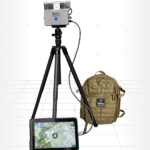The fingerprint matching portion of the FBI's Next Generation Identification (NGI) system is going through its contractor tests right now in preparation for independent testing by the agency later this year and is on track to be operational early next year, an FBI official tells TR2. NGI prime contractor Lockheed Martin [LMT] will deliver the fingerprint matching system later this summer at which time the FBI will begin its independent testing regimen, says Kevin Reid, the agency's deputy program manager…
Contract Updates
UPDATE: Eagle Safe Surfaces Colorado Inc. (Englewood, Colorado (SPE8EC-26-D-0006) – $139,000,000),
UPDATE: Eagle Safe Surfaces Colorado Inc.,* Englewood, Colorado (SPE8EC-26-D-0006, $139,000,000), has been added as an awardee to the multiple award contract for snow removal equipment, issued against solicitation SPE8EC-21-R-0008 and awarded Jan. 20, 2023. The contracting activity is Defense Logistics…
AvKARE LLC (Pulaski, Tennessee) – $12,915,328
AvKARE LLC, Pulaski, Tennessee, has been awarded an estimated $12,915,328 firm-fixed-price requirements contract for telmisartan tablets. This was a competitive acquisition with nine responses received. This is a one-year base contract with four one-year option periods. Locations of performance are…
Bernard Cap LLC (Hialeah, Florida) – $18,857,146
Bernard Cap LLC,* Hialeah, Florida, has been awarded a maximum $18,857,146 firm-fixed-price, indefinite-delivery/indefinite-quantity contract for green service uniform garrison caps. This was a competitive acquisition with six responses received. This is a five-year contract with no option periods. The ordering…
Science Applications International Corp. (Reston, Virginia) – $26,253,706
Science Applications International Corp., Reston, Virginia, has been awarded a $26,253,706 cost-plus-fixed-fee contract in support of Air Force modeling simulation sustainment support. The Air Force modeling and simulation services support (AFMS3) contract provides comprehensive support to the Department of the…













